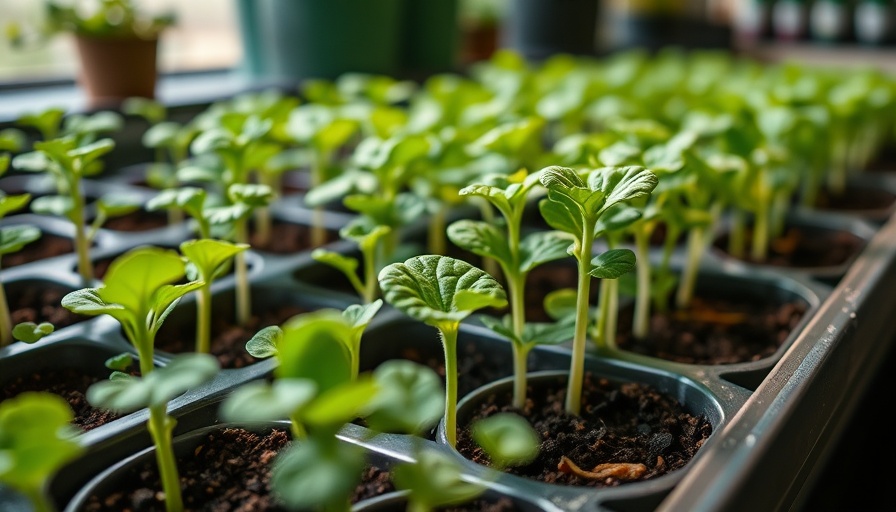
Discover the Joy of Growing Baby Greens Year-Round
If you’ve ever savored a fresh, crunchy bite of baby greens in your salads or on your ramen, you know that their delicate flavors and tender textures can elevate any dish. But growing these greens at home can be a rewarding experience, not just for your taste buds but also for your health. For homeowners in Folsom and El Dorado Hills, who enjoy DIY projects yet prefer a bit of guidance, embracing the art of cultivating baby greens can be an ideal endeavor.
Why Baby Greens Are a Perfect Choice
Baby greens, harvested when they are just 3-6 inches tall, offer some surprising advantages. Not only do they require less time to grow compared to full-sized greens, but they also tend to have milder, more appealing flavors. This means that even those who aren't fans of full-grown kale or collard greens might find themselves delighting in their baby counterparts. Additionally, packed with nutrients, these greens are a healthy option for enhancing your meals.
Growing Conditions: Indoors and Outdoors
Moving into cultivation, baby greens thrive both outdoors and indoors. For those mild California winters, let’s start with outdoor growing: find a location that receives indirect sunlight—perhaps a sheltered spot on your porch or a nook with some shade that still lets light filter through. If the temperature rises or harsh weather approaches, you can still enjoy these greens by moving them indoors under grow lights. A sunny window can also work wonders.
Planting Techniques for Optimal Growth
Begin with organic potting soil—in containers ranging from 2-inch pots to a larger tray, or even in a raised garden bed. Particularly when space is a concern, using trays or pots allows for a bit of versatility in your gardening approach. If planting in a garden, it’s crucial to space your seeds appropriately—about 2-4 inches apart. This facilitates proper air circulation and growth. Remember, you’re aiming to harvest baby greens, so dense planting caters perfectly to your goals.
Harvesting Tips for Continuous Yield
The beauty of growing baby greens lies in their ability to continue producing after harvest. Once your greens reach about four inches, begin snipping the outer leaves while leaving the inner leaves intact. This practice encourages regrowth, and you can snack on fresh greens many times over. Fertilizing them with liquid nutrients such as fish or kelp every four weeks will ensure that your plants remain robust and healthy, ready for consistent harvests throughout the growing season.
Customization and Varieties to Try
When it comes to baby greens, the world is your oyster—or, in this case, your salad bowl! Experimenting with varieties can open up a new culinary realm. Beyond traditional lettuce types, consider mustard greens, arugula, or different microgreens that are popular in local eats. These can provide not just unique flavors but varied textures and colors, making your meals both nutritious and visually appealing.
Future of Home Gardening: Sustainability and Beyond
As the trend toward local food sourcing and sustainable living continues, growing your greens can serve as an enjoyable and impactful part of this movement. Diversifying your home gardening practices can enhance biodiversity and help local ecosystems. Incorporating further sustainable practices, such as composting kitchen scraps for fertilizer, amplifies these benefits and tightens your connection with food production.
Conclusion: Why You Should Start Gardening Today
Embarking on your journey to grow baby greens can transform your culinary habits, promoting healthier eating while ensuring a sustainable lifestyle. As you cultivate these delicious morsels, you're likely to engage more with your meals, explore new flavors, and enjoy a rewarding hobby right in your backyard. Why wait? Start your greens-growing adventure today!
 Add Row
Add Row  Add
Add 




Write A Comment